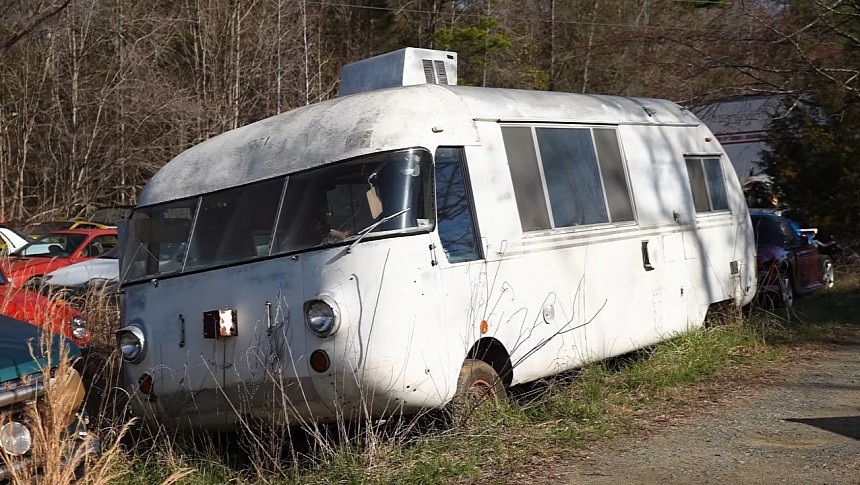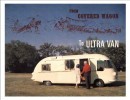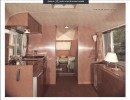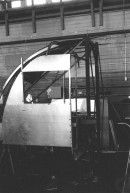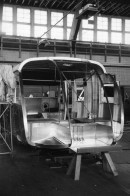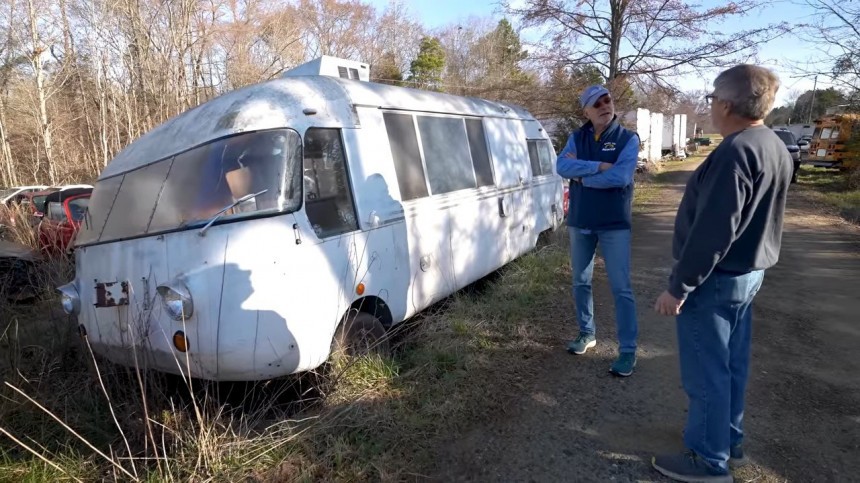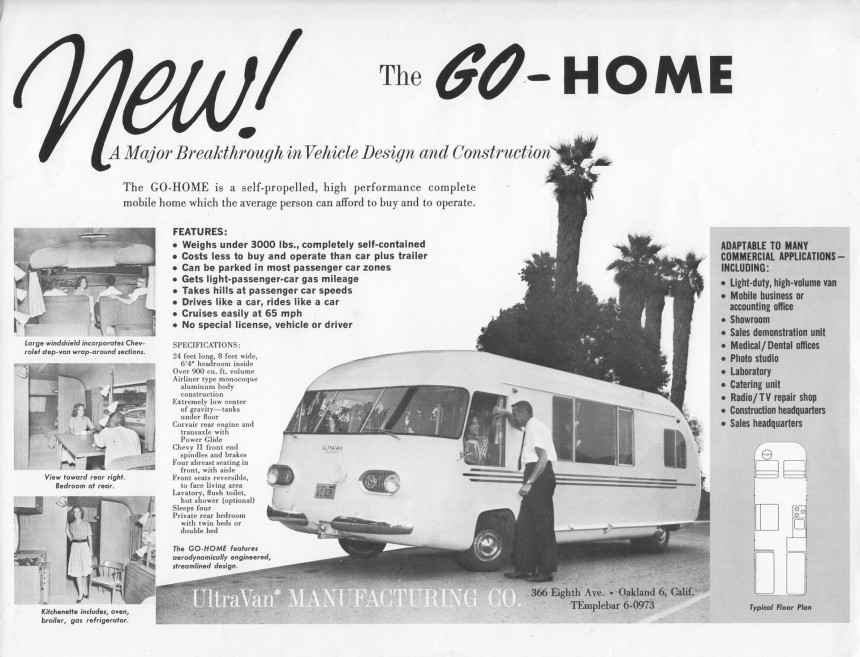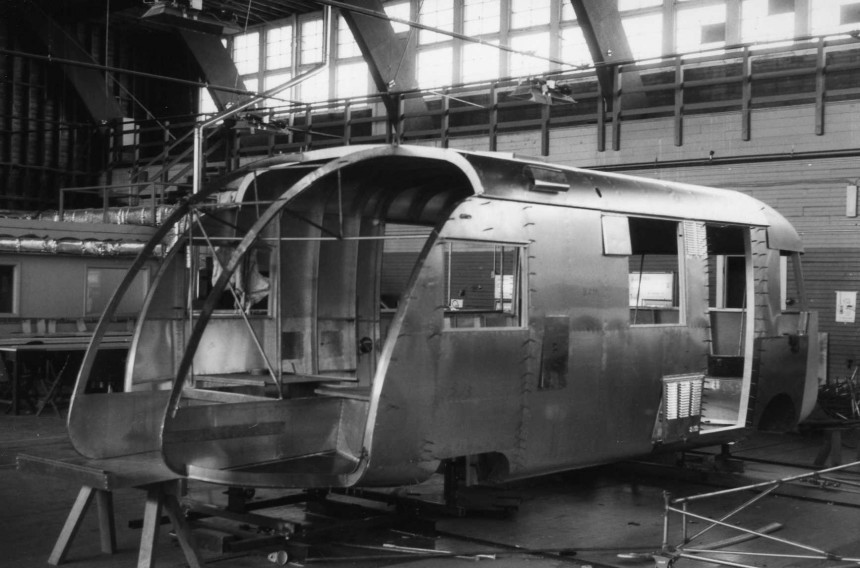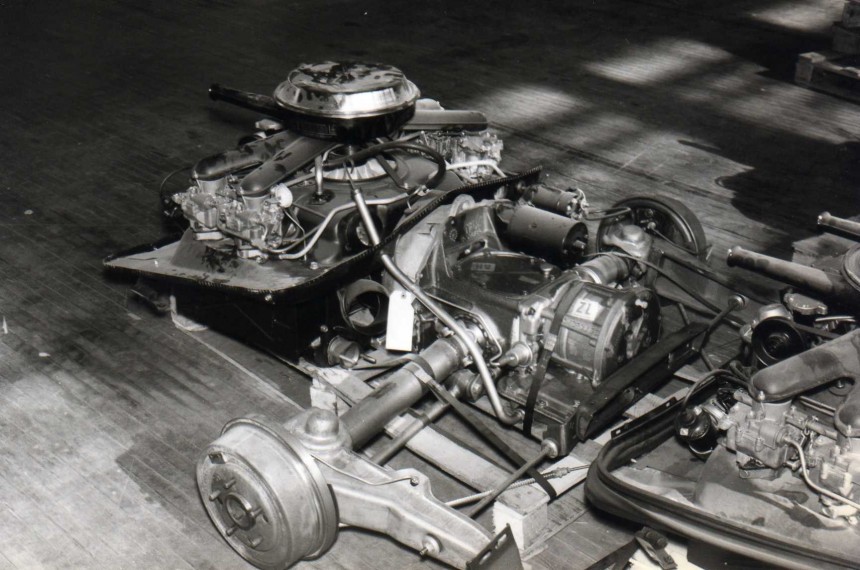In the 50s, post-war America was swarming with restless men and women who embraced the prospect of doing more, having more, and living more than their parents. That’s what spurred the economic boom and, subsequently, the growth of the automotive industry.
The evolution led naturally to the wide-spreading trend of road-trip family vacations, with everyone driving to and from their chosen destinations. However, a particular public segment wasn’t easy to satisfy.
Those pretentious few were simultaneously looking for all the comfort of their home and the freedom of outdoor recreation. The solution was age-old simple: a trailer home. Hook it to the end of a powerful V8-powered automobile, and you’re good to go. Dilemma solved.
Or not, because some of those already-picky clients also wanted to go fishing in their personal boats. And that posed a problem – and it wasn’t a small one: What do you take on vacation? The trailer home or the boat on its trailer? There are several answers for this, but only one seems to have been the ‘nailed it on the head’ solution.
The easiest choice would be to leave the boat at home. However, when the summer vacation is the only precious time of the year one can fully enjoy his aquatic hobby, that doesn’t do it. Then there’s the ‘take your damn boat and go without us’ family crisis. As tempting as that might have sounded, it wasn’t frequently acted upon.
That’s when the motor home steps in, meets all demands and brings harmony to the family. The lady gets her comfort; the man gets his fishing rods. The motor home can pull a trailer with a small boat, provided the vehicle has enough power. Or, more practically, put, more power-to-weight.
That’s precisely how an aeronautical engineer built a 3,000-lbs (1,360 kg) house-on-wheels with a Corvair 140-cubic-inch (2.3-liter) flat-six engine that delivered 80 hp. The man responsible for this was David Peterson, who used his lightweight-fuselage-building experience to contrive the ‘Go-Home.’
He set to work in a rented garage in Alameda, California, on September 1, 1960. On January 2, 1961, the Department of Motor Vehicles awarded the man his license for the ‘1960 housecar’ when David drove the contraption to the DMV’s office.
Fast-forward a few years, and Mr. Peterson is building his sleek, lightweight motorhomes for regular customers. That was 1966, and the man’s innovative approach to motoring had already attracted GM’s attention. The corporation gave its approval for the vehicle in late 1962 and printed a promotional flyer for the ‘Go-Home’ (see it in the gallery).
The ingenious construction took much from aircraft engineering - scroll through the gallery for factory photos of these vans being assembled. The vehicle didn’t have a chassis; it was a monocoque design built from aluminum. Named the ‘Ultra Van, with C-shaped ribs on which the sheet aluminum panels are riveted.
The front and rear are mostly molded fiberglass, and cast aluminum “A” frames are mounted in the front wheel wells (also act as seat platforms). A unique front-end geometry gives the inside wheel the ability to turn 50 degrees outward, thus allowing for a smaller turning circle than most pickup trucks of the day.
The Ultra Van was roomy, too, at 22 feet long (6.7 meters). Sitting on a 152-inch/3,860 mm wheelbase, the 8-foot-wide (2.4-meter) motorhome offered the occupants a 74-inch (1.88-meter) headroom.
By 1966, the powertrain was upgraded to Corvair’s 165-cube high-performance flat-six that produced 145 hp. GM’s two-speed Powerglide transaxle transmission put the power down to the rear wheels via a Posi-traction 3.56:1 rear.
Only 330 Ultra Van motorhomes were built with the Corvair powerplant, and only a few have survived. 47 late-60s units came with a small-block Chevy 307-CID (5.0-liter) V8 installed, but the most coveted and sought-after were the air-cooled units. One of the survivors sits in a junkyard, part of a collection of sitting-and-rotting automobiles unearthed recently by Tom Cotter, Hagerty’s Barn Find Hunter.
Although not an actual barn find, this Corvair Ultra Van doesn’t qualify for the scrap yard because it sits in the open. It is in a fair condition – with expected wear and tear caused by elements and neglect – and the owner claims the motorhome will get a much-deserved restoration one day.
The detailed brochure attached to this story is a thorough piece of literature about the rebellious Ultra Van – find it at the bottom of the article – and provides all the information that a 1960s buyer needs to make an educated decision.
The vehicle was within standard passenger car overall dimensions, thus requiring no extra license to own or drive. Thanks to its lightweight, low center of gravity, and responsive drivetrain, it was just as easy to handle. The inventor, Dave Peterson, fitted the gasoline and water tanks in the floor, thus keeping much of the ballast as close to the ground as possible.
With a base price of $8,995 in 1966, the Ultra Van was a convenient alternative to its motorhome rivals. The aircraft-inspired design is easy to guess from the outside. Still, the space-saving aeronautical solutions were carried over to the living spaces of the Ultra Van.
Overhead lightweight cabinets are neatly fitted to the curved hull all around the rear and mid sections of the vehicle, following the ceiling curve much like cabin bins in airliners from the era. It also brought along all the essential commodities of a mobile home.
A refrigerator, a three-burner stove, air conditioning, an instant water heater for the shower and kitchen sink, and easy-to-empty black-water tanks. Apart from the air-cooled engine that provided warm air to the cabin, a 15,000-BTU propane heater made winter road trips just as enjoyable as summer vacations on the go.
The van was light enough to make do with regular, cheap, easy-to-find, 14-inch tires. In road-ready condition, with full fuel and water tanks, food, and two people aboard, the Ultra Van tipped the scales at under 5,000 pounds (2.3 tons). Thanks to its small engine, streamlined body, and low weight, the Ultra Van was a money-saving motorhome, with a 15-to-18 miles per gallon (13-16 liters/100 km) fuel consumption reported by owners driving their vehicles between 55 to 65 miles per hour (88 to 105 kph).
Those pretentious few were simultaneously looking for all the comfort of their home and the freedom of outdoor recreation. The solution was age-old simple: a trailer home. Hook it to the end of a powerful V8-powered automobile, and you’re good to go. Dilemma solved.
Or not, because some of those already-picky clients also wanted to go fishing in their personal boats. And that posed a problem – and it wasn’t a small one: What do you take on vacation? The trailer home or the boat on its trailer? There are several answers for this, but only one seems to have been the ‘nailed it on the head’ solution.
That’s when the motor home steps in, meets all demands and brings harmony to the family. The lady gets her comfort; the man gets his fishing rods. The motor home can pull a trailer with a small boat, provided the vehicle has enough power. Or, more practically, put, more power-to-weight.
That’s precisely how an aeronautical engineer built a 3,000-lbs (1,360 kg) house-on-wheels with a Corvair 140-cubic-inch (2.3-liter) flat-six engine that delivered 80 hp. The man responsible for this was David Peterson, who used his lightweight-fuselage-building experience to contrive the ‘Go-Home.’
Fast-forward a few years, and Mr. Peterson is building his sleek, lightweight motorhomes for regular customers. That was 1966, and the man’s innovative approach to motoring had already attracted GM’s attention. The corporation gave its approval for the vehicle in late 1962 and printed a promotional flyer for the ‘Go-Home’ (see it in the gallery).
The ingenious construction took much from aircraft engineering - scroll through the gallery for factory photos of these vans being assembled. The vehicle didn’t have a chassis; it was a monocoque design built from aluminum. Named the ‘Ultra Van, with C-shaped ribs on which the sheet aluminum panels are riveted.
The Ultra Van was roomy, too, at 22 feet long (6.7 meters). Sitting on a 152-inch/3,860 mm wheelbase, the 8-foot-wide (2.4-meter) motorhome offered the occupants a 74-inch (1.88-meter) headroom.
By 1966, the powertrain was upgraded to Corvair’s 165-cube high-performance flat-six that produced 145 hp. GM’s two-speed Powerglide transaxle transmission put the power down to the rear wheels via a Posi-traction 3.56:1 rear.
Although not an actual barn find, this Corvair Ultra Van doesn’t qualify for the scrap yard because it sits in the open. It is in a fair condition – with expected wear and tear caused by elements and neglect – and the owner claims the motorhome will get a much-deserved restoration one day.
The detailed brochure attached to this story is a thorough piece of literature about the rebellious Ultra Van – find it at the bottom of the article – and provides all the information that a 1960s buyer needs to make an educated decision.
With a base price of $8,995 in 1966, the Ultra Van was a convenient alternative to its motorhome rivals. The aircraft-inspired design is easy to guess from the outside. Still, the space-saving aeronautical solutions were carried over to the living spaces of the Ultra Van.
Overhead lightweight cabinets are neatly fitted to the curved hull all around the rear and mid sections of the vehicle, following the ceiling curve much like cabin bins in airliners from the era. It also brought along all the essential commodities of a mobile home.
The van was light enough to make do with regular, cheap, easy-to-find, 14-inch tires. In road-ready condition, with full fuel and water tanks, food, and two people aboard, the Ultra Van tipped the scales at under 5,000 pounds (2.3 tons). Thanks to its small engine, streamlined body, and low weight, the Ultra Van was a money-saving motorhome, with a 15-to-18 miles per gallon (13-16 liters/100 km) fuel consumption reported by owners driving their vehicles between 55 to 65 miles per hour (88 to 105 kph).
